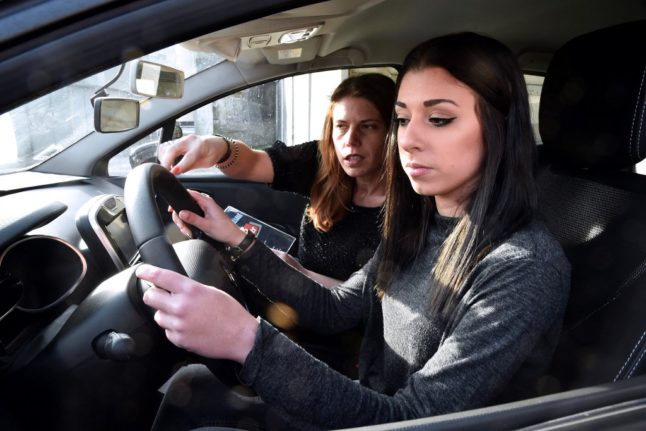Residents with a licence from the UK, who had been warned they might have to take an Italian driving test immediately, are in fact allowed to use their current permit until December 31st 2021, according to Italy’s Interior Ministry.
In a new circular dated April 24th, the ministry states that UK driving licences had the same status as EU ones until the end of the Brexit transition at the end of December 2020, which means that the requirement to replace them only came into effect from the beginning of January 2021.
Brits who were living in Italy before this date, then, have 12 months from January 1st in which to obtain an Italian licence – regardless of when they became resident.
Holders of a UK licence still have to take an Italian driving test from scratch to get their patenta di guida, though the British Embassy has said that talks continue on a reciprocal agreement that would allow Brits to swap their licence without resitting the exam.
If a deal is reached before the end of the year, people with UK driving licences could end up escaping the notoriously tricky theory and practical tests, which have to be taken entirely in Italian.
READ ALSO:
- EXPLAINED: How do you take your driving test in Italy?
- Getting your Italian driving licence: The language you need to pass your test
- How to register a foreign car in Italy

Article 135 of Italy’s Highway Code states that drivers whose licence was not issued by another EU country – or Iceland, Liechtenstein or Norway – have one year from the date they register their residence in Italy in which to get an Italian licence.
But the article cannot be applied retroactively, the Interior Ministry specifies in its circular, which means that even long-time British residents can begin counting their one-year grace period from January 1st 2021 rather than the date on which they actually declared residency.
Meanwhile people who exchanged an Italian licence for a UK one should be allowed to swap back to an Italian patenta without resitting the test, the circular also states.
“Negotiations with Italy are on-going on a future agreement for UK nationals living in Italy to be able to exchange their UK driving licence for a local one without re-sitting their test,” the British Embassy in Rome told The Local earlier this month, without indicating when a deal might be reached.
READ ALSO:
- What you need to know about getting an Italian driving licence post-Brexit
- British drivers in Europe to escape speed camera fines (and vice versa)
- How British citizens in Italy are overcoming bureaucratic problems
Only UK licence holders who have their full-time residence in Italy are required to get an Italian licence. Tourists and second-home owners can continue to use their UK licence when they visit and do not need an International Driving Permit.
While residents with licences from other EU countries – formerly including the UK – can swap their documents without retaking a test, Italy does not exchange licences from most non-EU countries, including the United States, Canada, India, Australia, New Zealand and currently, the UK.
Italy does have reciprocal driving licence agreements with around 20 non-EU countries, including Switzerland, Brazil, the Philippines and Turkey (full list here), which allow holders of these licences to swap their permits without a test.




 Please whitelist us to continue reading.
Please whitelist us to continue reading.
Brilliant! As I wanted to do the right thing I applied for a licence before the end of last year. I’m likely to return to the UK before the end of this year so it looks like that was a waste of time. Now I’ll have to see how to change the licence back to British when I return.
Dave , to exchange an Italian Licence is no problem in the UK they allow it!
This is good news though, but we do still need that reciprocal agreement.
I was getting worried about the lack of a reciprocal agreement, so you’re saying it’s OK to swap back to the UK one if you’ve previously had a UK licence?
I noticed when I got my Italian licence it was only for category B (cars), cat A (motorbikes) was empty. My UK licence had both. I’m not sure if that was a mistake or commonplace.
Dave, if you check the GOV site it tells you you can exchange an Italian Licence for a UK one.
When you exchanged here it should be like for like if a category is missing go back and complain.
I see there is no updates on the GOV site stating this new news…